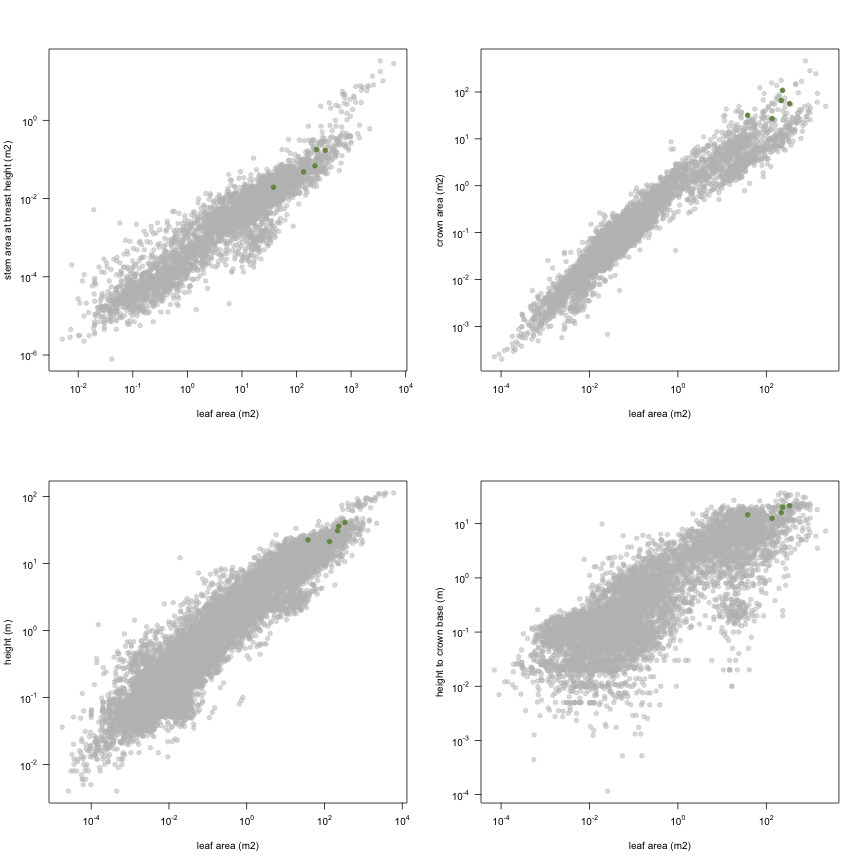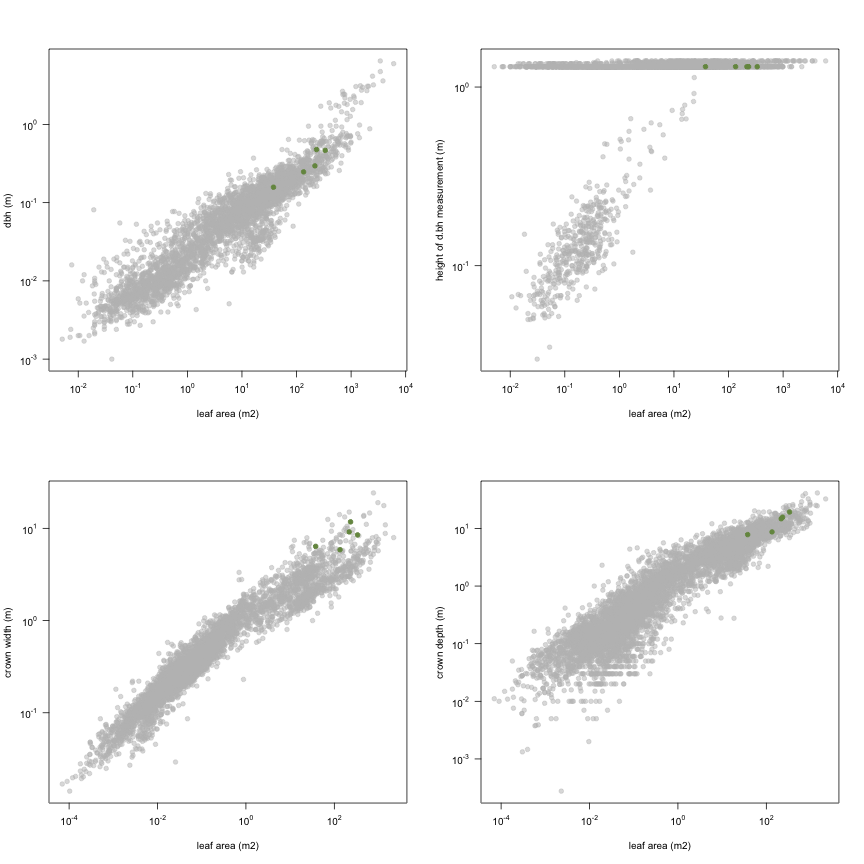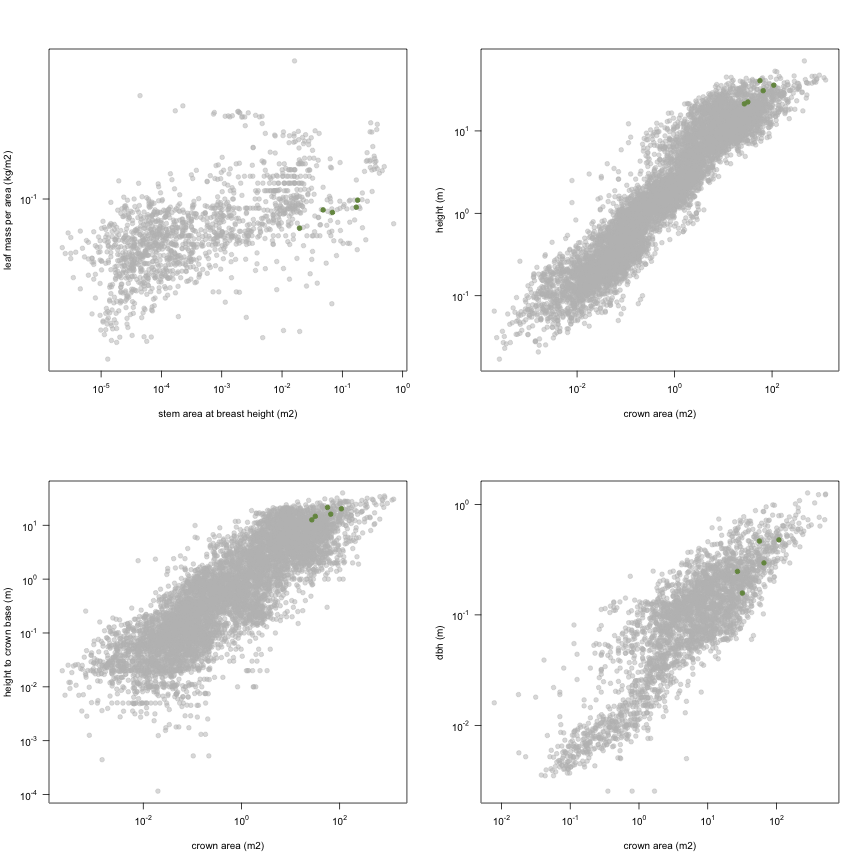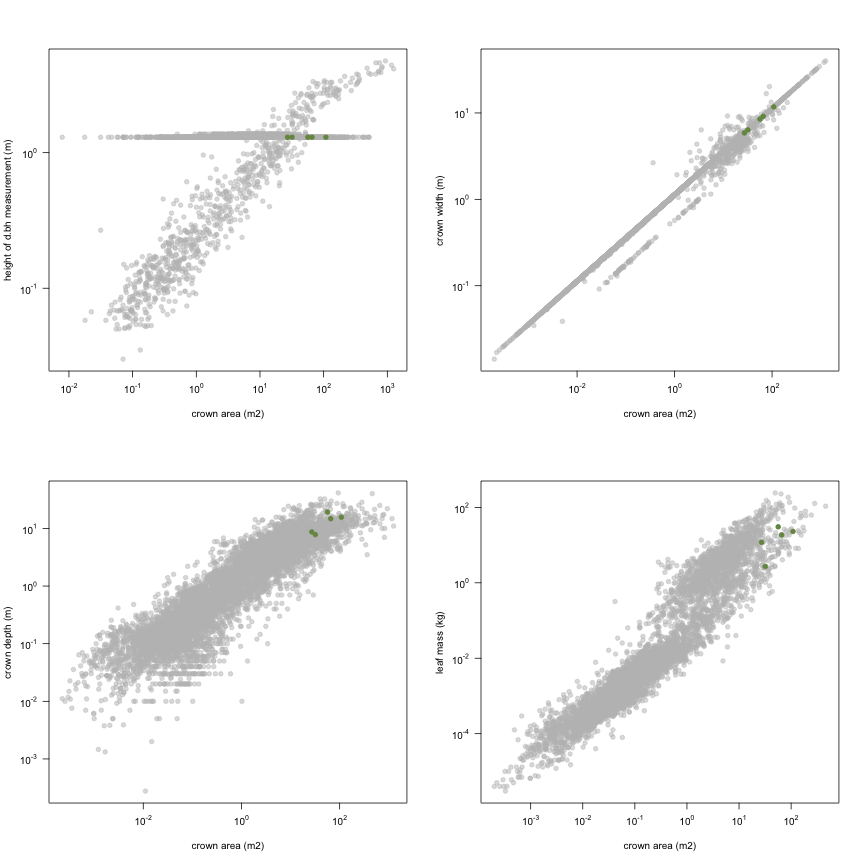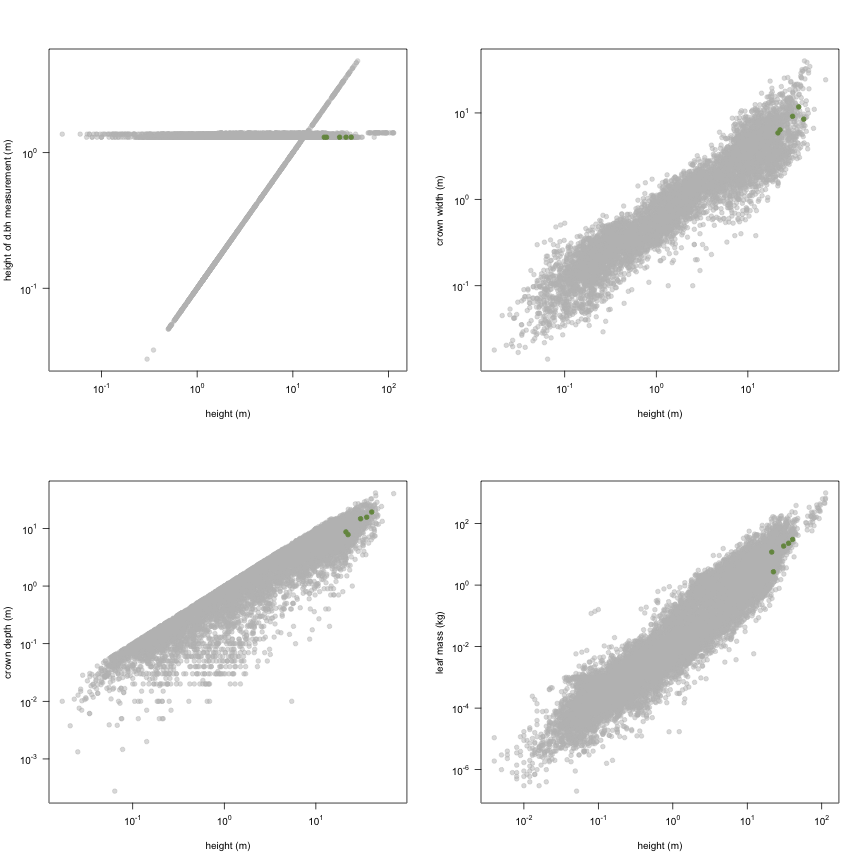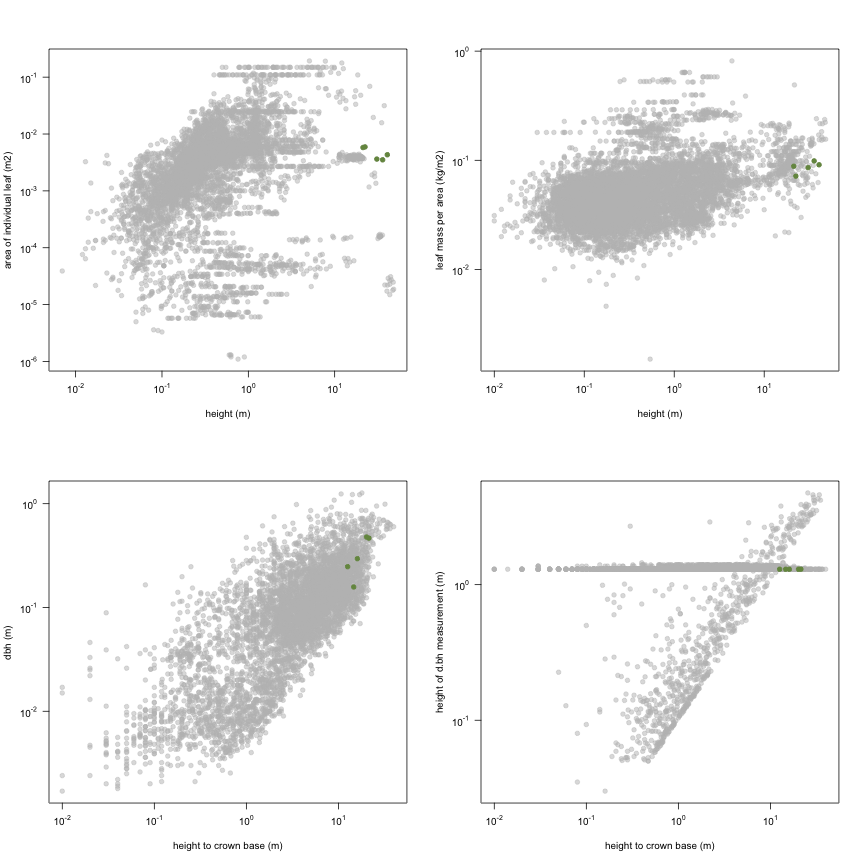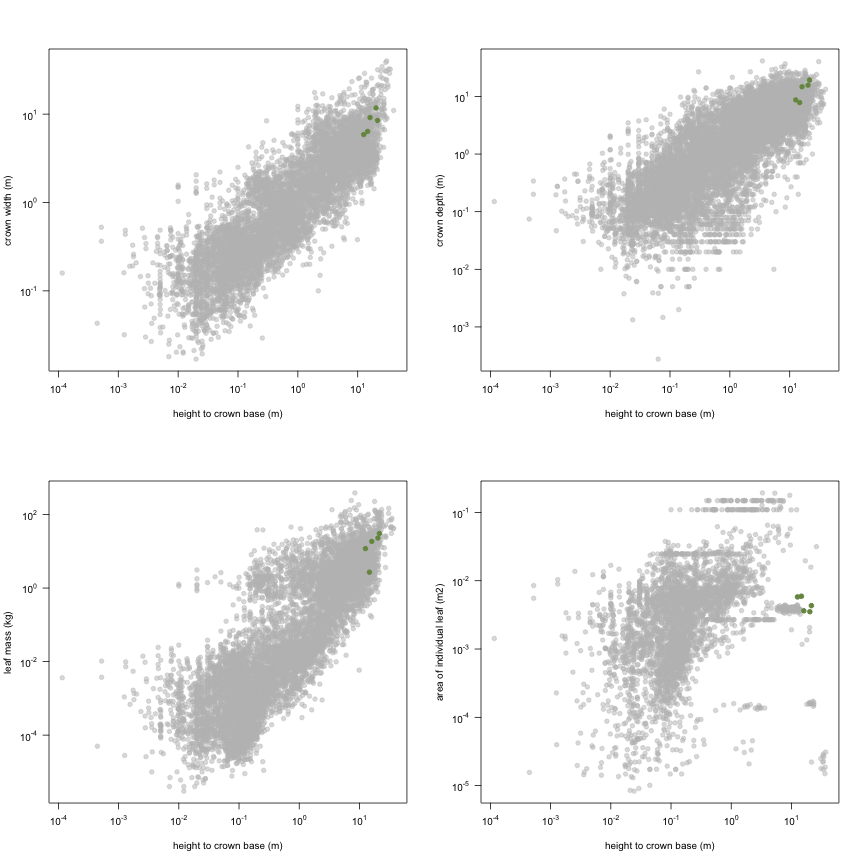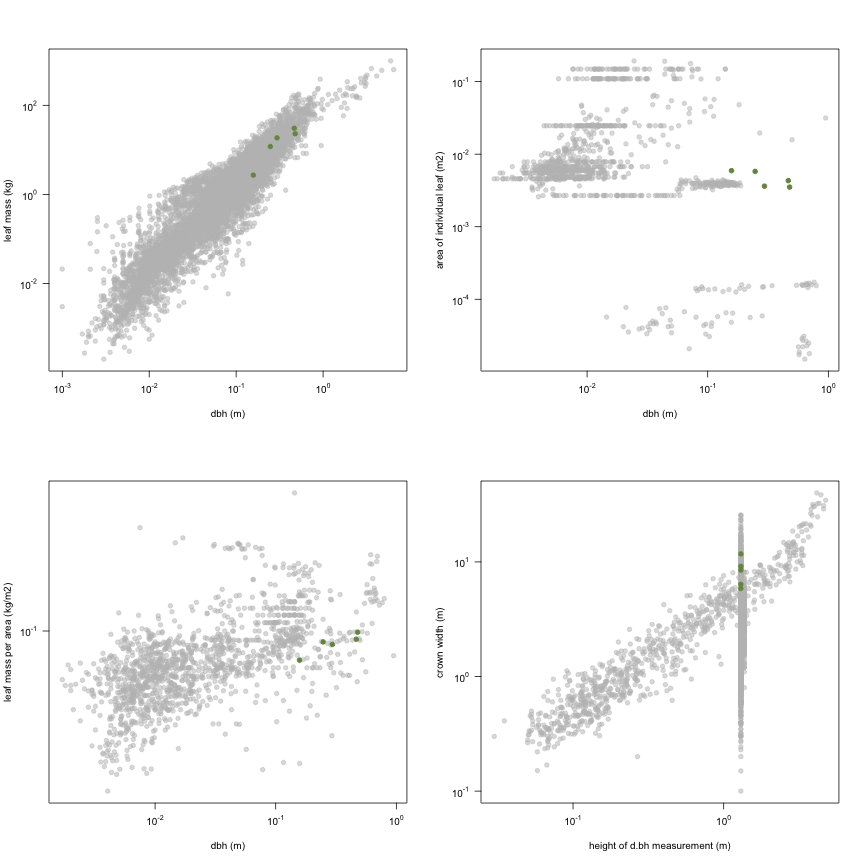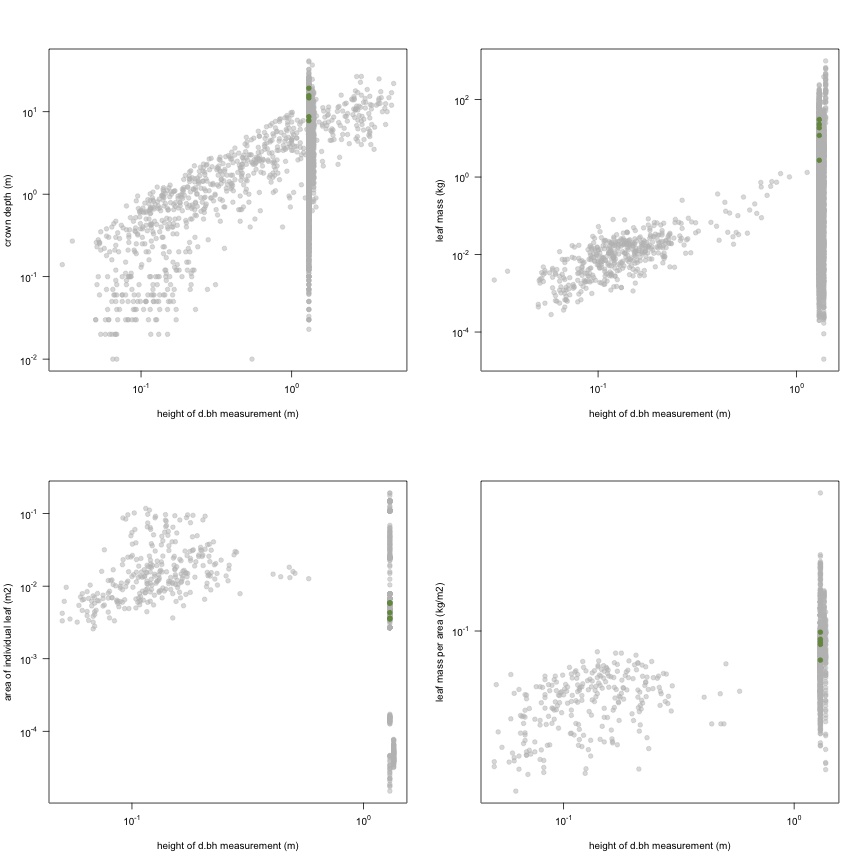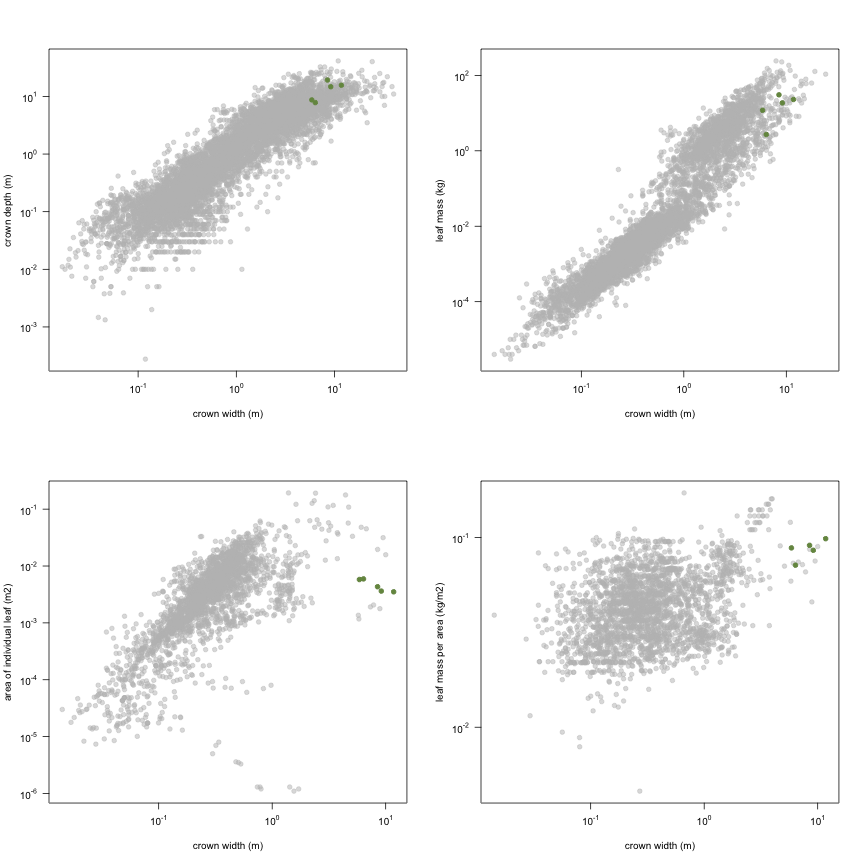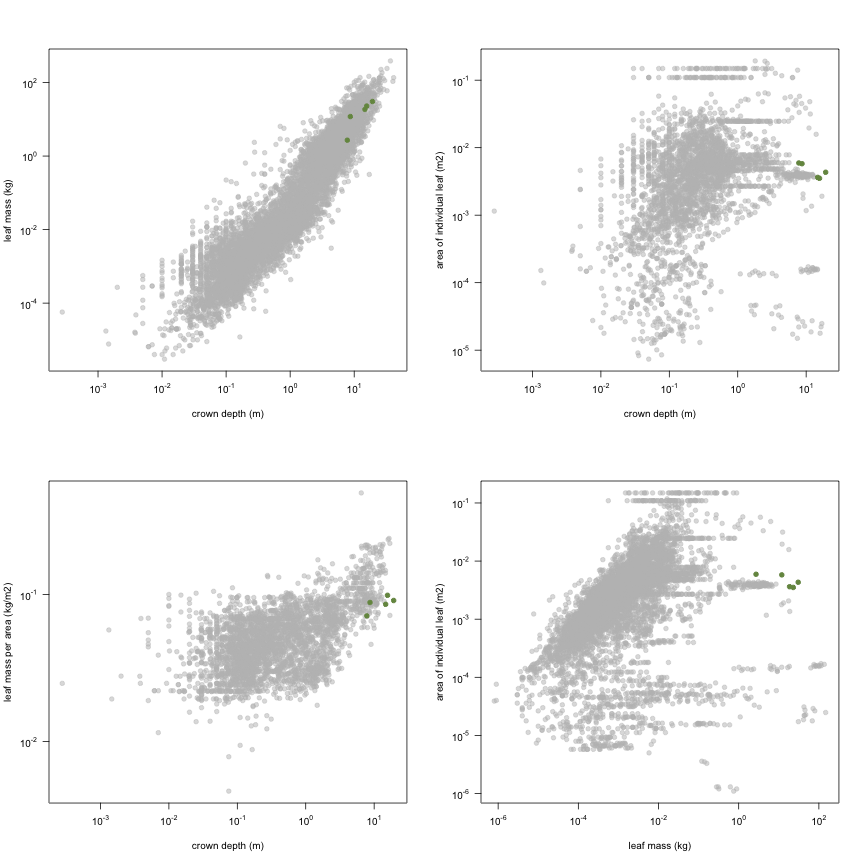Osada2003
Data contributor: Noriyuki Osada
Email: osadada@fsc.hokudai.ac.jp
Address:
- Tomakomai Research Station, Field Science Center for Northern Biosphere, Hokkaido University, Tomakomai 053-0035, Japan
Citation: Osada N, Takeda H, Kawaguchi H, Furukawa A and Awang M (2003). 'Estimation of crown characters and leaf biomass from leaf litter in a Malaysian canopy species, Elateriospermum tapos (Euphorbiaceae).' Forest Ecology and Management, 177(1-3), pp. 379-386.
DOI: 10.1016/S0378-1127(02)00393-6
Abstract: We estimated crown characteristics, such as median crown height, leaf fall rate and leaf biomass, from litter leaves for a Malaysian canopy species, Elateriospermum tapos. Leaf morphology was compared between the harvested and litter leaves for trees of various heights. Also, litter traps were set systematically around the trees of various heights, and distribution patterns were investigated for litter leaves. Leaf area and dry weight decreased with increasing height in a similar manner in both leaf litter and harvested leaves. This suggests that median crown height can be estimated from mean area or mass of the leaf litter of a tree in this species. Furthermore, horizontal distribution patterns of litter leaves were well explained by the Gaussian kernel. Leaf fall rate was estimated to be 2.0--28.1 kg per tree per year in the five trees of various heights, and was greater in taller trees. Since leaf life span was smaller for taller trees, leaf biomass was estimated to be 2.6--30.5 kg per tree, and was also greater in taller trees. These estimated values are similar to the values estimated from the allometric equation that uses the diameter at breast height and overall tree height as parameters.
The dataset includes records for 5 individuals from 1 species belonging to 1 family(ies), presenting 1 functional type(s), growing in 1 condition(s) within 1 major type(s) of habitat, with data included for the following variables:
| Variable | Label | Units | N | Min | Median | Max |
|---|---|---|---|---|---|---|
| latitude | Latitude | deg | 5 | 2.6 | 2.6 | 2.6 |
| longitude | Longitude | deg | 5 | 102 | 102 | 102 |
| a.lf | Leaf area | m2 | 5 | 38 | 217 | 335 |
| a.stbh | Stem area at breast height | m2 | 5 | 0.019 | 0.069 | 0.18 |
| a.cp | Crown area | m2 | 5 | 27 | 56 | 108 |
| h.t | Height | m | 5 | 21 | 31 | 41 |
| h.c | Height to crown base | m | 5 | 13 | 16 | 21 |
| d.bh | Dbh | m | 5 | 0.16 | 0.3 | 0.48 |
| h.bh | Height of d.bh measurement | m | 5 | 1.3 | 1.3 | 1.3 |
| d.cr | Crown width | m | 5 | 5.9 | 8.5 | 12 |
| c.d | Crown depth | m | 5 | 7.8 | 15 | 19 |
| m.lf | Leaf mass | kg | 5 | 2.7 | 19 | 31 |
| a.ilf | Area of individual leaf | m2 | 5 | 0.0035 | 0.0043 | 0.0059 |
| ma.ilf | Leaf mass per area | kg m-2 | 5 | 0.072 | 0.088 | 0.099 |
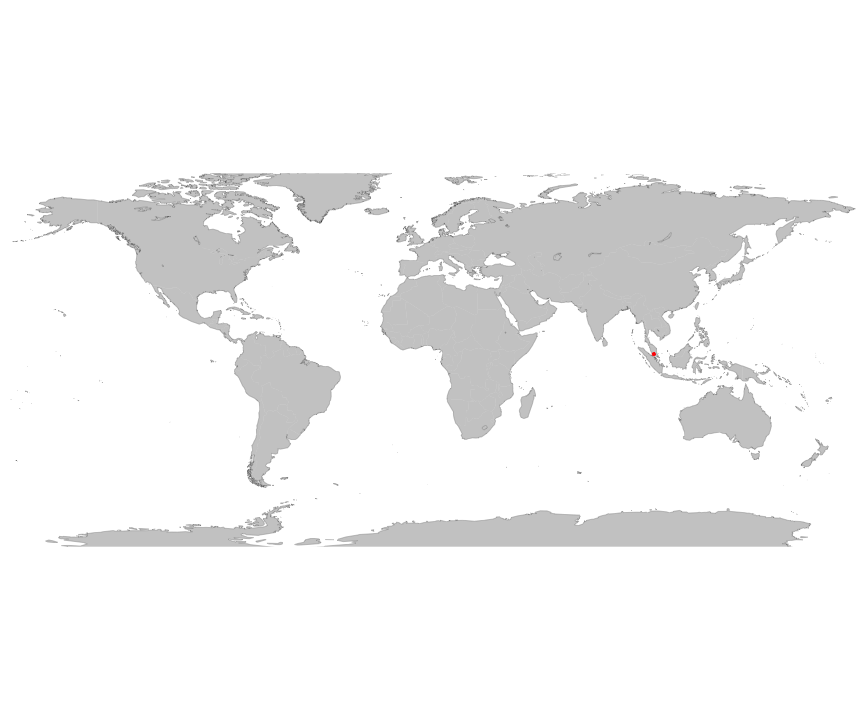
And locally within the country:

The sites sampled are:
| Location | Longitude | Latitude | Vegetation |
|---|---|---|---|
| Pasoh Forest Reserve, Malaysia | 102.18 | 2.59 | Tropical rainforest |
The growing conditions of sampled plants was:
| Location | growingCondition |
|---|---|
| Pasoh Forest Reserve, Malaysia | field wild |
| Species | Family | Pft |
|---|---|---|
| Elateriospermum tapos Blume | Euphorbiaceae | evergreen angiosperm |
Sampling strategy: Five individuals of 21.3 - 40.7 m in height were selected in the forest.
Leaf area: Leaf litter was collected systematically, and dry mass was recorded. Length, width, and dry mass of individual leaves from the dried leaf litter were measured. Fresh harvested leaves were scanned for leaf area using an area meter (AAM-8, Hayashi denko, Tokyo, Japan) and leaf area of the leaves from the leaf litter was estimated using the relationship between area, lenght and width.
Stem cross sectional area: Diameter at breast height was measured.
Height: Overall tree heights and lowest leaf heights were calculated using angle-distance measurements to the top of the tree and to the 1.5 m rod using a clinometer (Blume Leiss, Carl Leiss, Berlin).
Crown area: Crown widths were measured at the widest part of the crown and perpendicular to it. The projected area of the crown was calculated as an ellipse based on these two measurements.
Biomass: Standing leaf biomass was calculated by annual leaf litter biomass and mean leaf lifespan for each tree.
Growth environment: In the natural forest.
Year collected: 1997-1999
This is how the study Osada2003 fits in the entire dataset (grey). each colour represents a species. A legend of species names with colours is included at the end for reports with 1 < n < 20 species.
